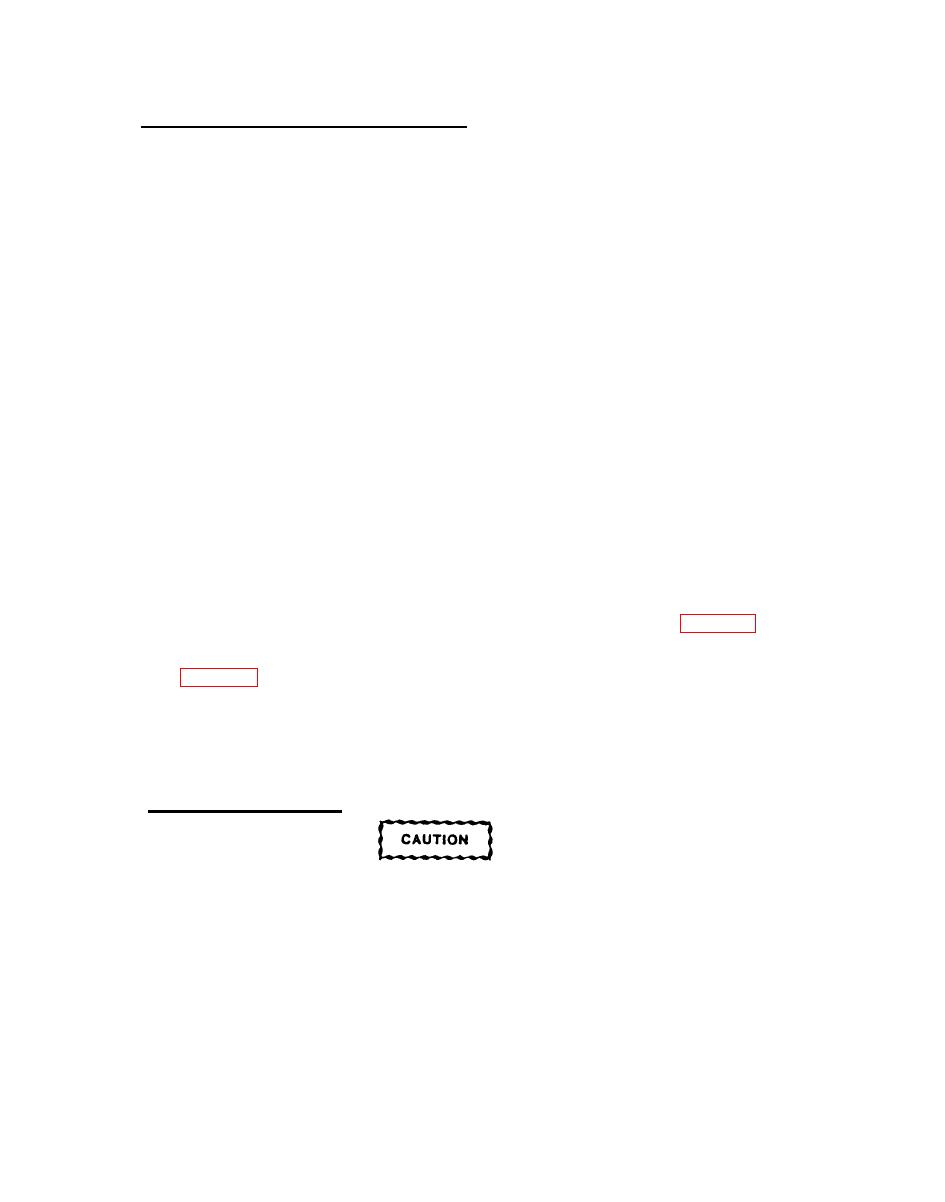 |
|||
|
|
|||
|
|
|||
| ||||||||||
|
|
 TM 32-5865-216-24&P
chassis-mounted componenents proceed as follows:
a.
Check for discolored, burned or cracked wire insulation, or
broken wires or terminals. Also check for cracked heatshrink
tubing.
b.
Check cable connectors for correct pin depth.
c.
Check for loose or broken tie wrap mounts, mounting clamps,
tiedown straps or grommets.
d.
Check for discolored (cold), cracked, or loose solder
connections.
e.
Check for leaking, bulging, or burned capacitors or filters.
f.
Check for discolored, burned, powdered, or cracked diodes,
resistors, or other semiconductors devices.
Check for damaged brackets, covers, housings, and plates.
g.
Check for loose or missing attaching hardware.
Inspect exterior surfaces of the unit for dust, chipped paint,
h.
Locations and corrosion. If necessary, spot paint surfaces as
follows:
1.
Remove rust and corrosion from metal surfaces by lightly
sanding them with No. 000 sandpaper (item 16, App. D).
2.
Brush two coats of light green semi-gloss enamel (item 5,
App. D), MIL-E-15090 Class 2, type III, color number 24410,
IAW Standard 595, on bare metal to protect it from further
corrosion.
Refer to the applicable cleaning and refinishing practices
3.
specified in TB 43-0118.
To inspect the CCAs proceed as follows:
Inspection of CCAs.
Certain CCAs contain electrostatic discharge sensitive
(ESDS) devices that can be damaged by static electricity.
Special handling methods and materials must be used to
prevent damage. Do not touch or remove any ESDS device
or circuit without properly grounding your body, tools,
and test equipment. Handle such CCAs on the edge only,
and store such CCAs in conductive (antistatic) bags.
Check for cracked circuit card.
a.
b.
Check for loose or damaged shields or heatsinks.
|
|
Privacy Statement - Press Release - Copyright Information. - Contact Us |